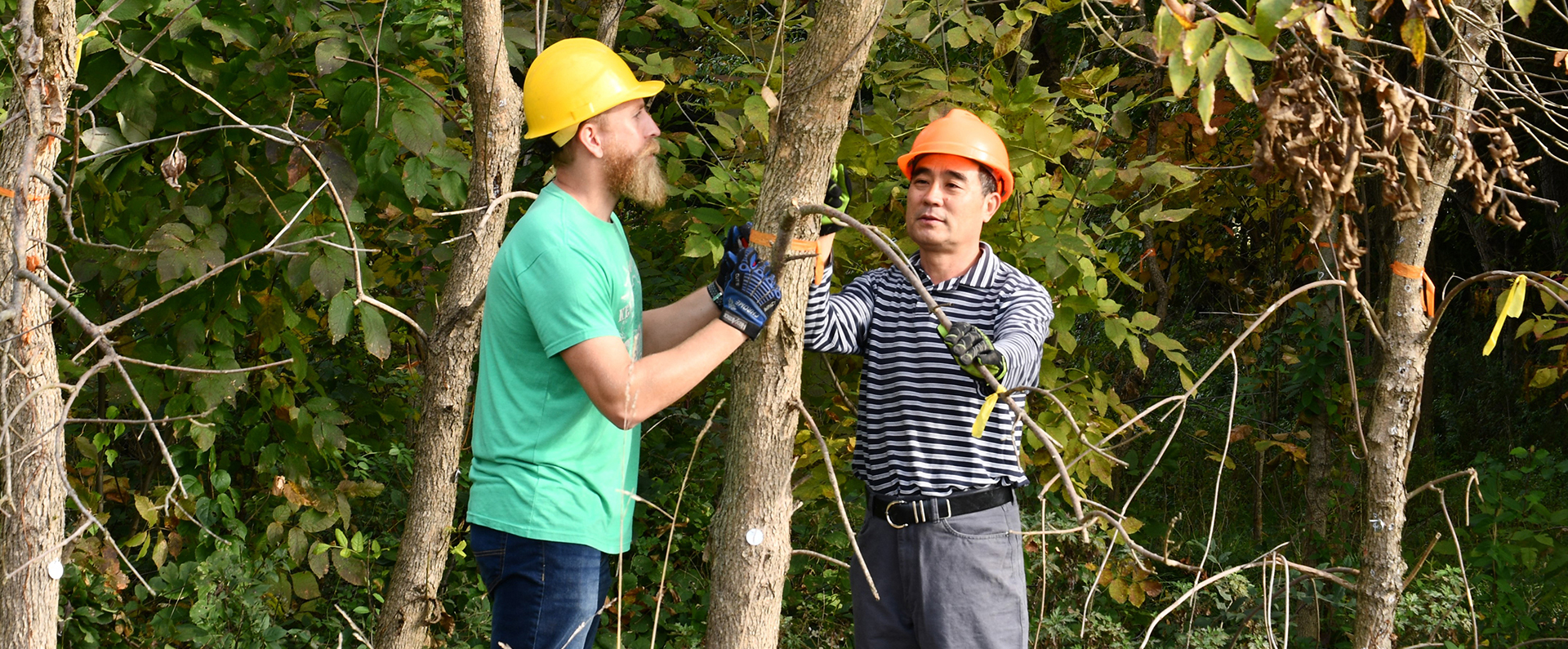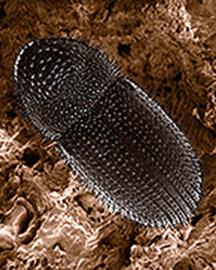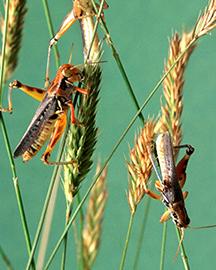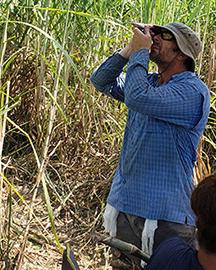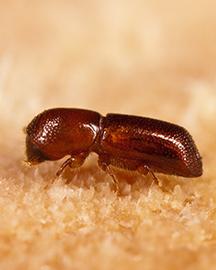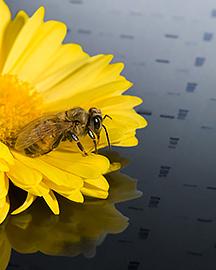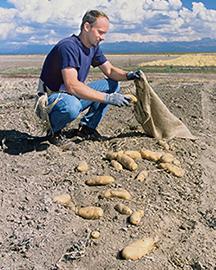Wasp Recruited to Fight Emerald Ash Borer
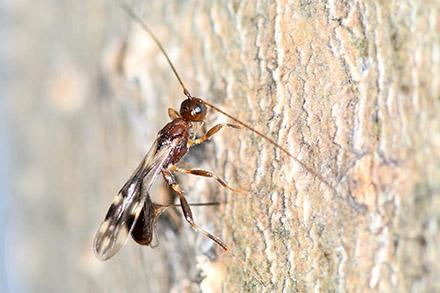
A tiny, stingless wasp is earning high marks as a biological control agent against the emerald ash borer (EAB), an invasive, wood-boring beetle from Asia. The metallic-green, half-inch-long pest has killed hundreds of millions of ash trees in North America since 2002. Adult beetles nibble at ash leaves, but it is the larvae that cause the real harm, by feeding on the inner bark and disrupting the flow of water and nutrients to the rest of the tree, killing it in 3 to 5 years. Chemical insecticides can be an effective control measure for individual trees, but repeat treatments are needed every year or two, and widespread applications are not feasible.
As an alternative, scientists with ARS, the Forest Service, and Animal and Plant Health Inspection Service searched for natural enemies of the beetle in its native range, particularly northeast China and the Russian Far East. One promising candidate was Spathius galinae, a 5-7 millimeter-long parasitic wasp that lays its eggs on EAB larvae but poses no danger to people, pets, or other animals. When the eggs hatch, the wasp’s own larvae feed on their much larger host, killing it. After carefully evaluating the wasp’s host specificity, scientists released it in EAB-infested areas of Connecticut, Massachusetts, and New York. S. galinae established a self-sustaining population 3 years after its initial release and spread more than 8 miles from the original release points, parasitizing 35 to 78 percent of EAB populations and reducing its densities there.
Related Information
Article: Controlling Emerald Ash Borer


